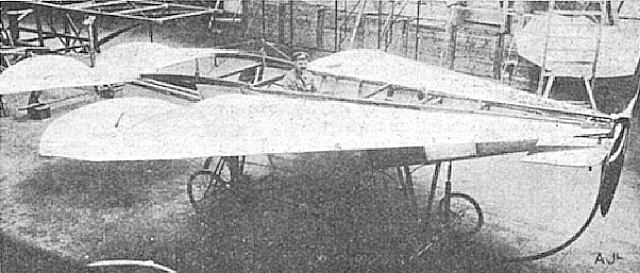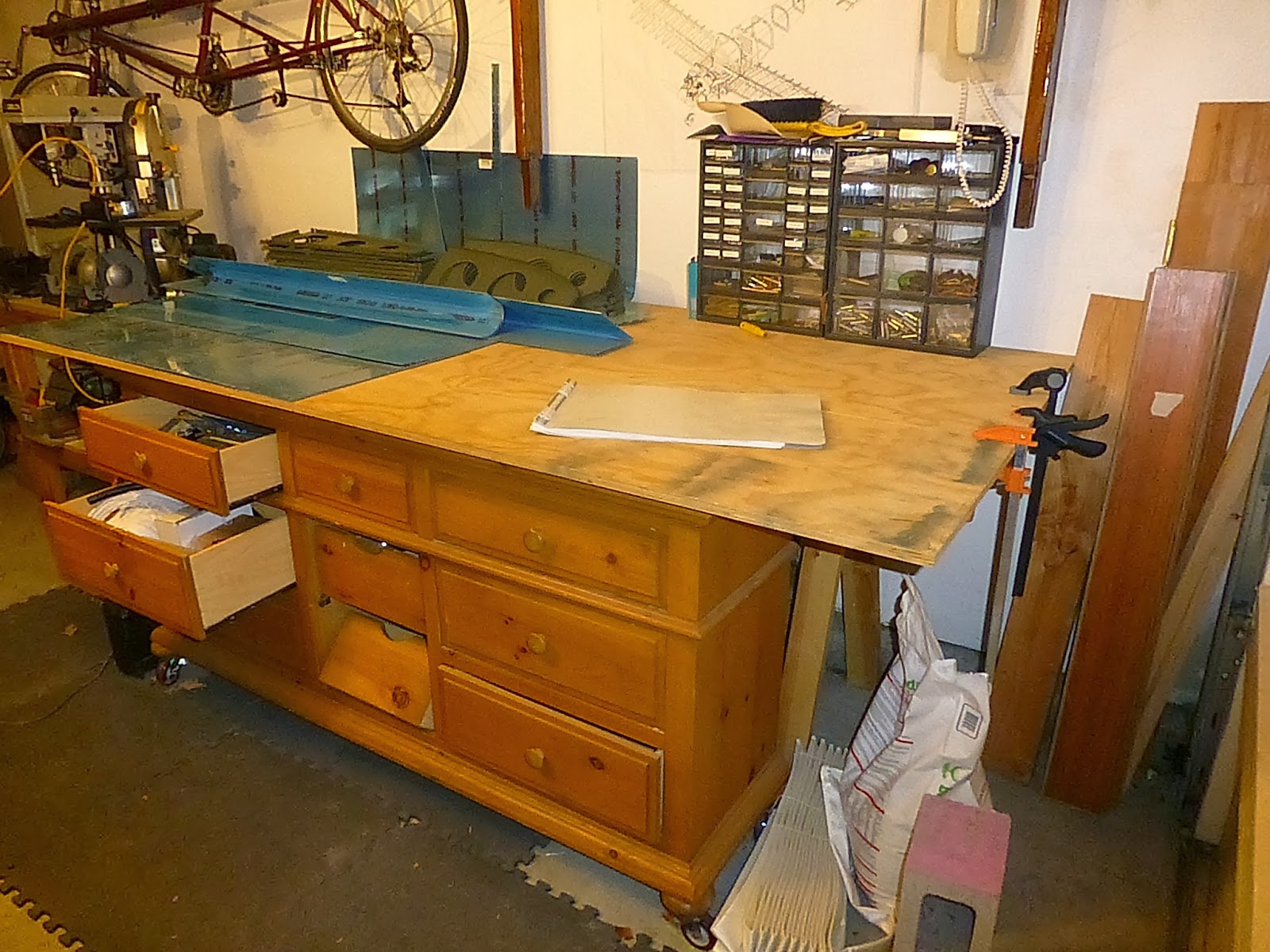Happy New Year! Hope your New Years Eve was safe and fun. The CFO and I went to Old Sacramento to enjoy the midnight fireworks show on the waterfront. Crowded, but festive! Afterwards we had a 1:00 am dinner-breakfast at Denny's. The young-un got to go to a sleep-over with a bunch of other rambunctious nine and ten-year old girls at a friend's house. I heard they got about three hours sleep. I'd say they did pretty well.
New Year's day I assembled the stall warning switch, screwed it to one of the forward wing ribs, wired it up, and ran some kite string through the length of the wing for pulling the wiring for the wing tip position lights later on. Also ran a couple extra strings just in case I add a left-side landing light sometime in the future (the plans have the landing light on the right side only). Right
and left landing lights, especially in the pulsing "wig-wag" mode, would add a nice symmetry and make the airplane more visible. But for now we stick to the plans.
Wiring the stall warning switch necessitated the purchase of another pair of terminal crimpers to attach connectors on the ends of the wires. Well one end anyway. The TERMINAL INSTALLATION TABLE on page 5-14 of the plans recommends the "TH-450", which Google reports as costing somewhere between $48 and $752.95. Yikes! What is it about aviation-related parts and tools?? Thankfully some Chinese businessman thought he could make 'em cheaper and sell knockoffs at Harbor Freight, so faithful to my miserly tendancies I bought this one instead (The red one, not the yellow one. The yellow one I picked up at Frys when I was doing the wiring connector for the aft servo).
With a 25% off coupon it was $7.50 plus tax. Thank you HF!
Between the two pairs of crimpers I should be able to crimp any electrical connector likely to be found on an airplane. Or hopelessly mangle untold numbers of electrical terminals, which could also happen with the $753 crimpers.
Here's the stall warning switch mounted on the rib:
What I didn't do, even though it's the next step in the plans, is peel off the blue plastic and cleco on the middle front wing skin in order to set the adjustment on the position of the switch and bend on the stall warning tab "if necessary". The instructions are a bit confusing and I'd like to get some assistance on this from someone who's done it before. I may have to actually attend a local EAA chapter meeting to beg for help. Problem is that I think only one of the local EAA members has built an RV-12, but maybe it's the same for all Vans RV's. I'll have to check. There's a chance that, by setting it at the mid-range position, that it won't need any adjustment. Wouldn't that be splendid?! I'm also going to round the corners on the stall warning tab with a file. The protruding corners on that thing look like a flesh wound waiting to happen.
Regarding the wing storage issue, I purchased a couple items to hang one end of the left wing from the ceiling for when I get ready to start the right wing skeleton, possibly as soon as this weekend. The D-ring anchor (mounted on the ceiling in the picture below) was also from Harbor Freight. The packaging says it "Mounts to Floor of Trailer or Truck Bed" and is "Not for lifting" However the stated working load is 233 lb and the breaking strength is 700 lb, so I assume that hanging one end of an 85 lb wing on it will be okay. I used a couple of fairly beefy lag bolts and screwed 'em tightly into the center of the ceiling/floor joists, which run left to right. It could probably hold several hundred pounds, but I'm not anxious to find out what the rip-the-bolts-out-of-the-ceiling-joists yield strength is. I made sure that the ceiling anchor was out of the way of the garage cabinet doors, but the CFO voiced concern about the location over the hood of
her car by asking why I couldn't just put it on the
other side of the garage. You know,
my side. Had to explain that that's where the other wing will go. In a month. Or two. Three at the most. Okay four.
Love you honey!
Soon I'll hang the spar end (not the outboard end) of the left wing here to get it out of the way so I can start the right wing. The caribineer I picked up at REI for $6 slips into one of the spar pin holes, the ones with the big brass bushings. It's actually made for rock climbing so I had to modify (i.e., ruin) it with the drill press to remove the spring-loaded latch thingy. I'm not sure what the yield strength on a ¼-inch carabineer is but it's a lot, even with one side missing. It doesn't show in the picture, but I also filed it a little so that weight wouldn't be concentrated on the rim edge of the brass bushing. Luckily it turns out the thickness of the wing spar on the beefy end is about the same as the width of a regular metal file. The other end of the wing will probably require a strap of some sort, but I'm not quite sure yet what I have lying around.


















